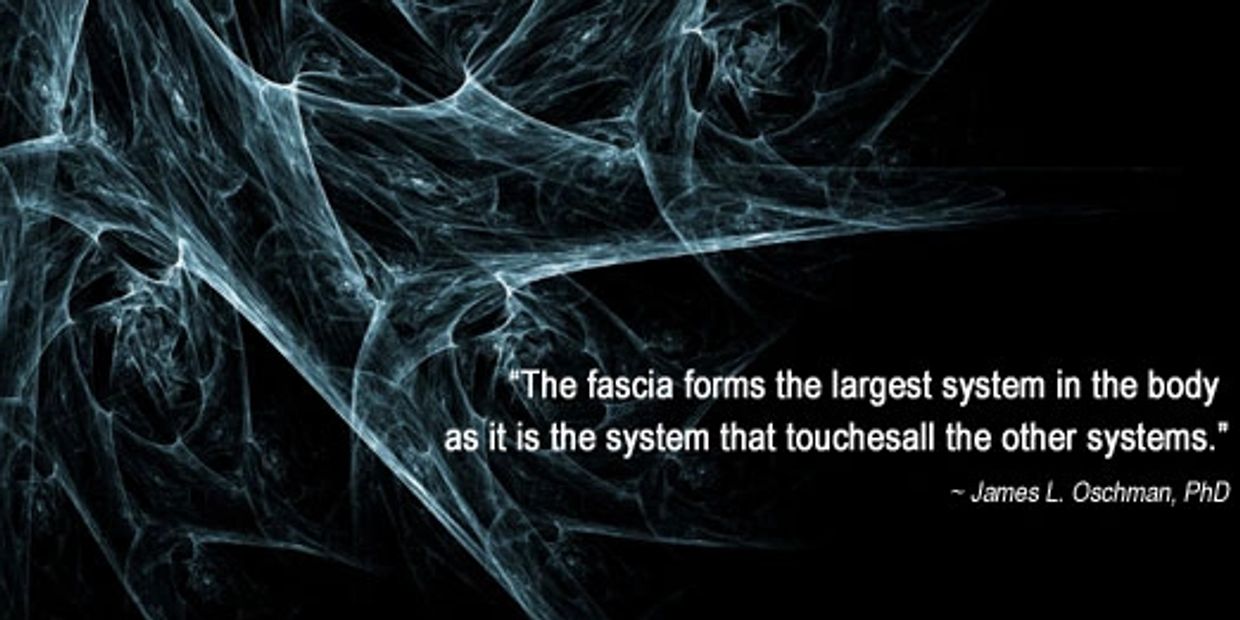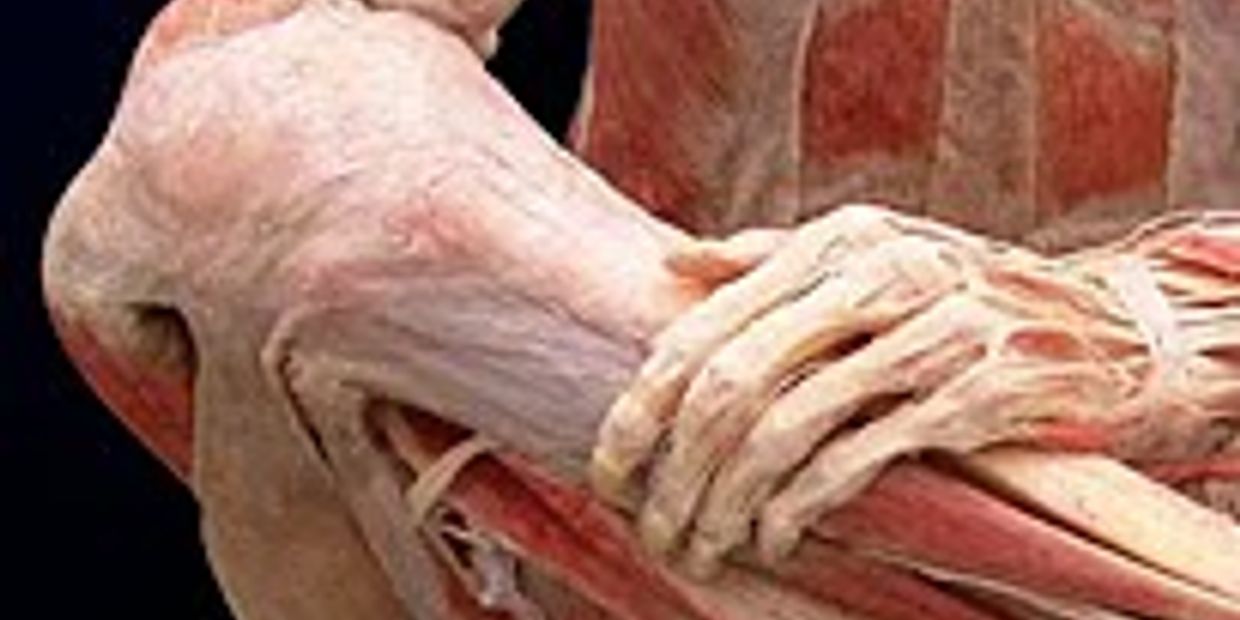
An Introduction to Fascia
The Connective Tissue system is the largest organ system in the body. The fascial tissue is the largest component of the connective tissue system. It is the fascial system that Dynamic Re-Integration seeks to re-organize and bring back to a healthy state. To understand how this is accomplished it is necessary to have a basic understanding of what is fascia.
Because this is a wonderful description of the anatomy of fascia I will be quoting directly from an article written and posted on the Realbodywork.com website. This is a very informative website and you are encouraged to check it out. The material presented to you has been edited slightly, not for content, but for organization purposes. The pictures are inserted and do not originate from the quoted article. At the end of the RealBodywork article there will be an explanation of how Dynamic Re-Integration works with the fascial system.

FROM REALBODYWORK.COM
FASCIA AS THE GREAT ORGANIZER
Fascia is a type of connective tissue. Fascial sheaths surround and penetrate almost every structure in our bodies. Fascial sheaths surround individual nerve fibers, and also bundle those fibers into larger trunks. Loose fascial networks hold our adipose tissue in place as it pads and protects other structures. Fascia also surrounds arteries and veins as well as interleaving itself through every muscle. There are three layers of fascia in every muscle, the endomysium, the perimysium and the epimysium. These three layers of fascia within the muscle merge at the ends of the muscle to form a tendon. Still the same components- ground substance, collagen and elastin, but now the fibers arrange themselves in parallel to be able to transmit the pull of the muscle without breaking. This fascial network does not stop there. Not only does this tendon embed itself into the bone, it also fans out, surrounding the entire bone- literally becoming the periosteum of the bone. Then from the periosteum to anther tendon, into another muscle to another tendon surrounding another bone and so on until the fascia in your toes has connected through this network to the fascia in your head and fingertips- uniting your body in one continuous fascial network. Add to that all the other tissues- nerves, arteries, veins, fat and organs all suspended and penetrated by this fascial network- it’s no wonder it’s called connective tissue.

ANATOMY OF FASCIA
There are 4 types of tissue: muscle, nervous, epithelial and connective tissue. These 4 types of tissue make up every structure in our body. Connective tissue is the most pervasive, and has three basic ingredients. These are collagen, elastin, and ground substance.
COLLAGEN
Collagen fibers are the longest molecules ever found. If one were as thick as a pen, it would be a yard long. Collagen is a protein consisting of three polypeptide chains that line up to form white fibrils. They are stronger than steel and can hold ten thousand times their own weight. Collagen fibers give tissues their tensile strength, resiliency and structural integrity.
ELASTIN
Elastin fibers are much like rubber bands. Elastin fibers allow the tissue to stretch, thereby helping to absorb shock. Fascia, tendons and ligaments contain both collagen and elastin fibers.
GROUND SUBSTANCE
Ground substance is a viscous, transparent fluid, like raw egg whites. It surrounds all the cells in the body, and is part of our internal ocean. Chemically the ground substance is a mucopolysaccharide. Its main components are hyaluronic acid and proteoglycans. Hyaluronic acid is viscous and lubricates the collagen, elastin, and muscle fibers, allowing them to slide over each other. Proteoglycans form the gel of the ground substance. This gel is excellent at dispersing shock and holding tissues in place. One of the most amazing properties of the ground substance is its ability to go from a jelly-like state to a completely liquid state. This is called thixotropy. Just like Jell-O- when its cool, it’s a jelly, and when its warm, it’s a liquid.
In areas of injury or little use- or in old age, the ground substance in fascia is less of a liquid, and becomes a harder gel. Unfortunately, if the ground substance become too hard it begins to restrict motion and dry up. In bodywork the mechanical stretch, body heat and bio-electric energy all contribute to taking the ground substance from a gel to a liquid. In its liquid state it allows movement, stretch and for the exchange of nutrients and cellular wastes to occur more efficiently.
Dynamic Re-Integration and Fascial Release
In the Dynamic Re-Integration (DRI) form of myo(muscle)fascial release we are working with all three substances: elastin, collagen and ground substance. It requires sustained pressure and the transference of frictional energy to allow the elastin fibers to reach their full stretch length. Therefore, as we work our way deeper into the tissues, the therapist will "hold onto" and lengthen the fascial lines as they follow them through the body. Fascia planes interconnect into predictable lines. These fascial lines become disrupted over the natural course of a lifetime due to factors such as accidents, injuries, under or over use, strains and sprains, surgeries and scars. It is the nature of fascia to stay where it is put, which is a good thing, or otherwise our bodies would be shape-shifting all the time. But if, for instance, you are rollerblading fairly fast and take a fall onto your hip then the fascial sheets can be pushed out of their natural placement, and again, their tendency is to stay there. As DRI therapists, we look for those shortened areas that deviate from your normal posture and begin our therapy at those shortened or displaced places. The good news, however, is that as we return the fascia to its optimum position it tends to stay there.
Because we are working with the collagen fibers which- remember- "are stronger than steel and can hold up to ten thousand times their weight", some amount of pressure is needed to straighten and lengthen these strong fibers. Injured fascia can be very tender to the touch, in which case the therapist will back slightly out of the area. On the other hand restrictions, also called adhesions, can be rather numb in which case the therapist may be more assertive in that area to break up the adhesion.
It is important to bear in mind that this process should not be painful. Alert the therapist if they are working in a painful area. Pain is stimulating to the stress response and although we may work momentarily at an uncomfortable level in order to reach an adhesion, it should overall be a comfortable process.

Blood vessels, nerve fibers, and lymphatic tubules run through the 3-D web.

All of the visible white tissue is fascia, notice it's interconnected spread.

It is the ground substance that allows for the slip and slide of healthy fascia.
Unlocking the Secrets of Fascia
To read an article about fascia from The Washington Post, Click the link below.
